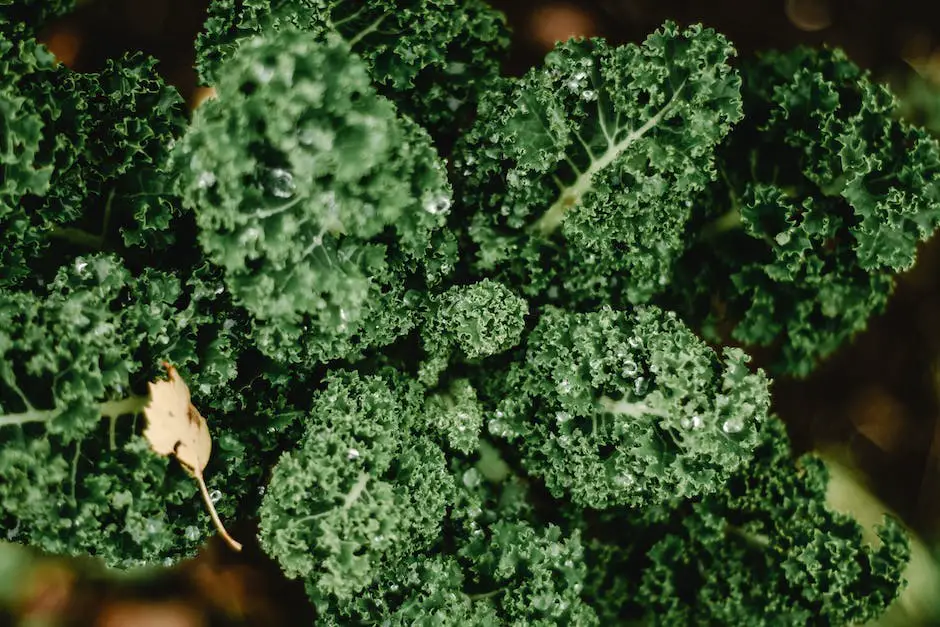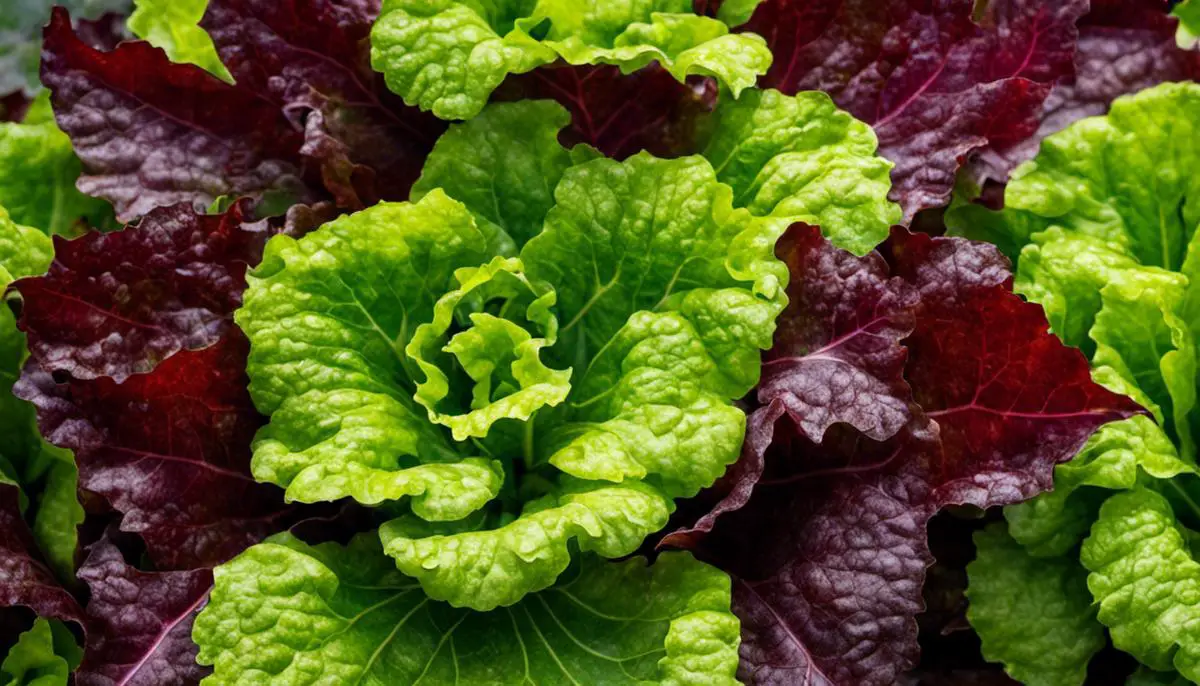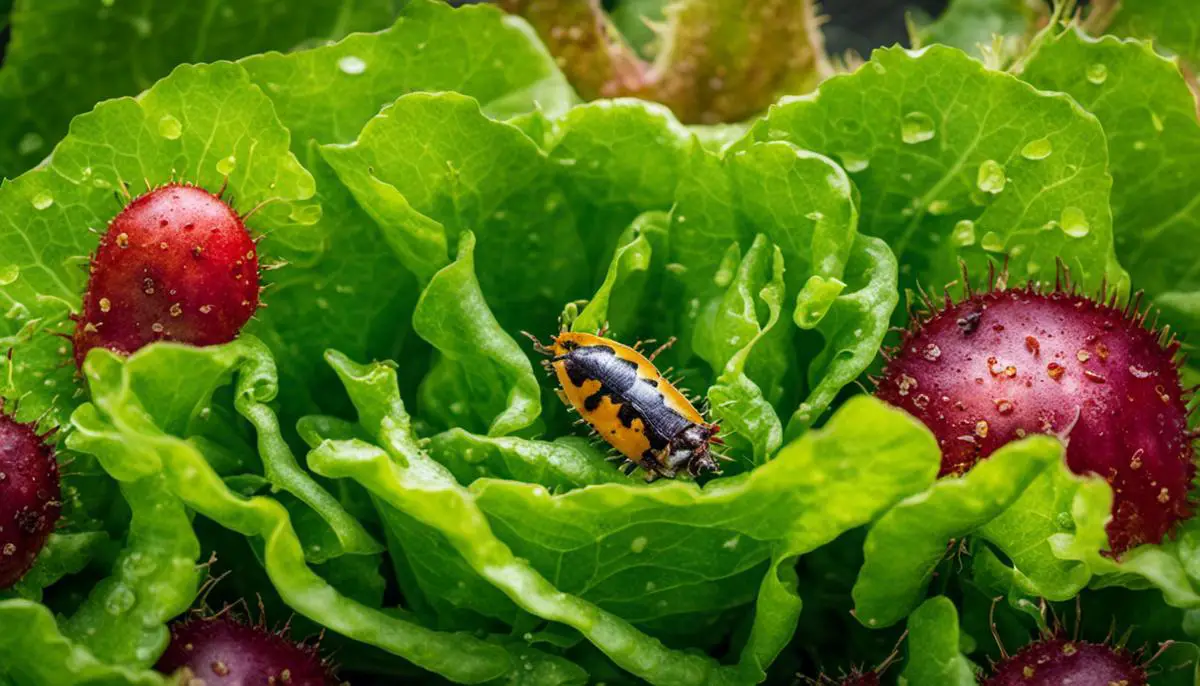In the verdant world of vegetable gardening, lettuce holds a unique place due to its wide utilization in a plethora of culinary practices. However, it’s troubled frequently by various pests and diseases which disrupt its healthy growth and maturation. This comprehensive guide aims to provide an in-depth exploration of common lettuce pests and diseases, their identification, preventive strategies to shield your lettuce plants, and effective treatment measures. As we delve into each topic, lettuce cultivators will acquire the knowledge necessary for maintaining a healthy, thriving lettuce patch, capable of resisting the harmful impacts of pests and diseases.
Identifying Lettuce Pests and Diseases
Title: Thwarting Thrips & Countering Cutworms – A Comprehensive Guide to Lettuce Pests & Diseases
Reader Poll: What online courses would interest you?
As a loyal friend to the diligent hobbyist, there’s nothing quite like the reliable, crisp charm of home-grown lettuce. Each lush leaf seems to sing of hours of dedication, the nurturing touch infused in every salad or sandwich. However, even in the most cultivated of greens, challenges may sprout, namely in the form of pests and diseases. But, fear not! Our ever-growing knowledge base can equip every backyard agronomist to swiftly and skillfully handle these intrusions, ensuring that every head of lettuce remains healthy and resilient.
Starting with the intruders that crawl! Aphids, small sap-sucking insects, are the bane of many leafy greens. They are likely to dehydrate lettuce plants and lead to a condition known as ‘lettuce tip burn’. Look out for clusters of these tiny, soft-bodied critters on the underside of leaves to prevent your leafy greens from their uncomfortable company.
Slugs and snails are also fellow lettuce-lovers who can easily make a feast of your produce overnight. These munching mollusks leave behind a trail of silvery slime and holes chewed through the leaves, making them easy to identify.
Subscribe to our newsletter!
Cutworms, these sly devourers, can gnaw at the base of lettuce seedlings, causing the entire plant to wilt and collapse. If you’re wondering why your young plants are falling over as if sliced from the root, it’s time to ascertain the presence of these notorious leaf lettuce lurkers.
Turn now to the invaders that fly! Thrips are dainty yet destructive creatures known to ravish a variety of crops, including lettuce. They strike the plant by causing discoloration in patches, a condition often referred to as ‘silvering.’
Fly under the radar, leafminers will! These tricky insects lay their eggs on the undersurface of the foliage and their larvae tunnel through the leaves, creating squiggly lines. These are your undeniable bread crumbs leading to these elusive pests.
Lastly, do not underestimate the microscopic adversaries! Powdery mildew, downy mildew, and Botrytis cinerea are common lettuce afflictions. These fungi thrive in wet, humid conditions and appear as white, gray, or fuzzy growths on the surface of the leaves.
Downy mildew manifests as yellow, angular spots on the upper side of the leaf, with a purplish-grey fuzz appearing underneath. Powdery mildew, on the other hand, will grace your lettuce with white to gray powdery spots on both sides of the leaves.
The dreaded Botrytis cinerea, commonly known as ‘Gray Mold,’ can cause significant damage during damp, humid conditions. Its presence is marked by a soft, brown decay of the plant, often showing as grayish-brown, fuzzy spots.
By learning to uncover these commonly occurring lettuce assailants, every enthusiast can become an effective gatekeeper of their greens. It is a skill set born out of diligence, observation, and an unrelenting love for the craft. So, as you sow your seeds, adequately nurture your greens, and keep an eye out for these signs – the art of successfully rearing lettuce could be just another budding leaf in your flourishing hobby.

Preventive Measures for Lettuce Pests and Diseases
Unveiling Preventive Measures for Guarding Lettuce against Pests and Diseases
Thriving in modern gardening or farming undoubtedly requires an armor of knowledge and proficiency, especially when it comes to maintaining the vitality of your lettuce greens. As an ardent hobbyist, it’s crucial to equip yourself with the right arsenal of preventive strategies against pests and diseases that could hinder the growth and productivity of your lettuce plants. Let us delve into some practical methods!
One of the most effective strategies is crop rotation. By preventing the cultivation of lettuce in the same area repeatedly, you reduce the likelihood of soil-borne diseases and pathogens. This extensively lowers the risk of diseases like Fusarium Wilt and Septoria leaf spot, which could significantly degrade the health and vigor of lettuce greens.
Secondly, perhaps an underrated strategy but a vital one is maintaining good garden hygiene. This involves ensuring your gardening tools are well cleaned and sterilized to prevent the transfer of diseases. Furthermore, regular removal of dead or diseased plant materials can help to limit the spread of fungal infections like Sclerotinia sclerotiorum, commonly known as lettuce drop.
Barriers and traps can also be highly beneficial in preventing the influx of pests. Using gardening fabrics or insect netting helps to block out whiteflies and aphids. Meanwhile, slug traps filled with beer or yeast solution can be conveniently dotted around your lettuce patches to capture and drown these notorious gastropods.
Companion planting can be a useful tool for discouraging pests in your lettuce garden as well. Incorporating onions, garlic, or chives beside your lettuce can help to deter aphids, due to their intense scent. Marigold and nasturtium, on the other hand, can repel whiteflies and nematodes.
When it comes to pests like the Cabbage looper or armyworms, consider biological control in the form of introductions of natural enemies such as parasitic wasps, lacewings, lady beetles, or hoverflies. These beneficial insects are great at controlling these pest populations.
Using the right fertilizers and soil amendments can help to make your lettuce plants more resistant to diseases, too. Strengthening the plants through the incorporation of organic matter improves their overall health, making them less susceptible to diseases.
It’s important to remember that professional help is always within reach when needed. For severe infestations or unavoidable pest and disease problems, consulting local extension services can provide the most appropriate and reliable solutions.
In essence, effective prevention of lettuce pests and diseases doesn’t require expensive or high-end equipment. Rather, it involves the clever application of simple, good gardening practice. With these strategies on your tool belt, nurturing healthy, pest-free lettuce patches can be your next exciting venture. Happy gardening!

Treatment of Lettuce Pests and Diseases
As our garden tour continues, let’s dive right into some targeted techniques for tackling those pesky pests and diseases that have already made your lettuce their home. Armed with the right knowledge and tools, victory over these garden invaders is indeed possible!
Let’s start with an important method often overlooked by newbie gardeners – insecticidal soaps and horticultural oils. These sensational solutions can work wonders against a myriad of pests, including aphids, thrips, and leafminers. Since they target soft-bodied insects directly, they do not pose a threat to beneficial insects such as ladybugs or bees. Remember, consistency is key for success. Regular applications, typically every 4-7 days, usually bring noticeable improvements.
Pests like slugs and snails aren’t too fond of copper. In fact, copper is somewhat of an electric fence for these pests. When their slimy bodies come into contact with copper, a natural electric charge forms, deterring them from crossing the barrier. Establish a copper barrier around your lettuce plants using copper tape or mesh. Instant results are not guaranteed, so patience is key here.
Nematodes are incredible allies worth having in your garden. You might be pondering, “Wait, aren’t they harmful?” Yes, some are. But we’re referring to beneficial nematodes, microscopic creatures that effectively manage soil pests like cutworms. They invade the pests, causing a naturally occurring bacteria to release, which kills them.
When it comes to battling diseases, organic fungicides are an excellent weapon of choice. Products containing Bacillus subtilis or copper soap are particularly effective against both powdery and downy mildew. They prevent the spores from growing and spreading, thereby controlling the disease.
But there’s no one-size-fits-all solution here. What if your lettuce is plagued by botrytis cinerea, dubbed as the Gray Mold? That’s where biofungicides come into the picture. These contain beneficial microorganisms that colonize the plant surface and compete with pathogenic fungi, including gray mold. Head to your trusted local gardening center to find suitable biofungicides.
Now, to be truly armed against pests and diseases, you need to augment the immune system of your lettuce by providing water-soluble supplements. Yes, plants need vitamins too! They fundamentally require micronutrients, such as iron, manganese, and zinc, for optimal plant health and disease resistance.
Lastly, let’s talk about intercropping. It’s a smart approach involving growing lettuce with other plants that can deter pests or attract their natural enemies. Lettuce paired with dill repels aphids while attracting their predators, like lacewings and ladybugs. Similarly, planting lettuce under larger crops provides protection from pests and adverse weather conditions.
Venturing into the world of gardening and plant care requires an investment of time, patience, and learning. Treating infested lettuce plants streamlines the experience and enriches your knowledge. Now, go forth and put this wisdom into practice. Here’s wishing you a bountiful and pest-free harvest!

While managing a lettuce patch can seem an overwhelmingly complex task, equipped with the right set of skills and knowledge, any cultivator can excel. From accurately identifying the types of diseases and pests that can plague lettuce plants, to implementing preventive measures and treatment strategies, understanding these critical aspects is key for effective lettuce farming. Whether you employ organic or synthetic measures, the ultimate aim should be to foster a healthy, productive lettuce patch. With the insights gained from this guide, may your journey in lettuce cultivation be filled with a bountiful, disease-free harvest.

